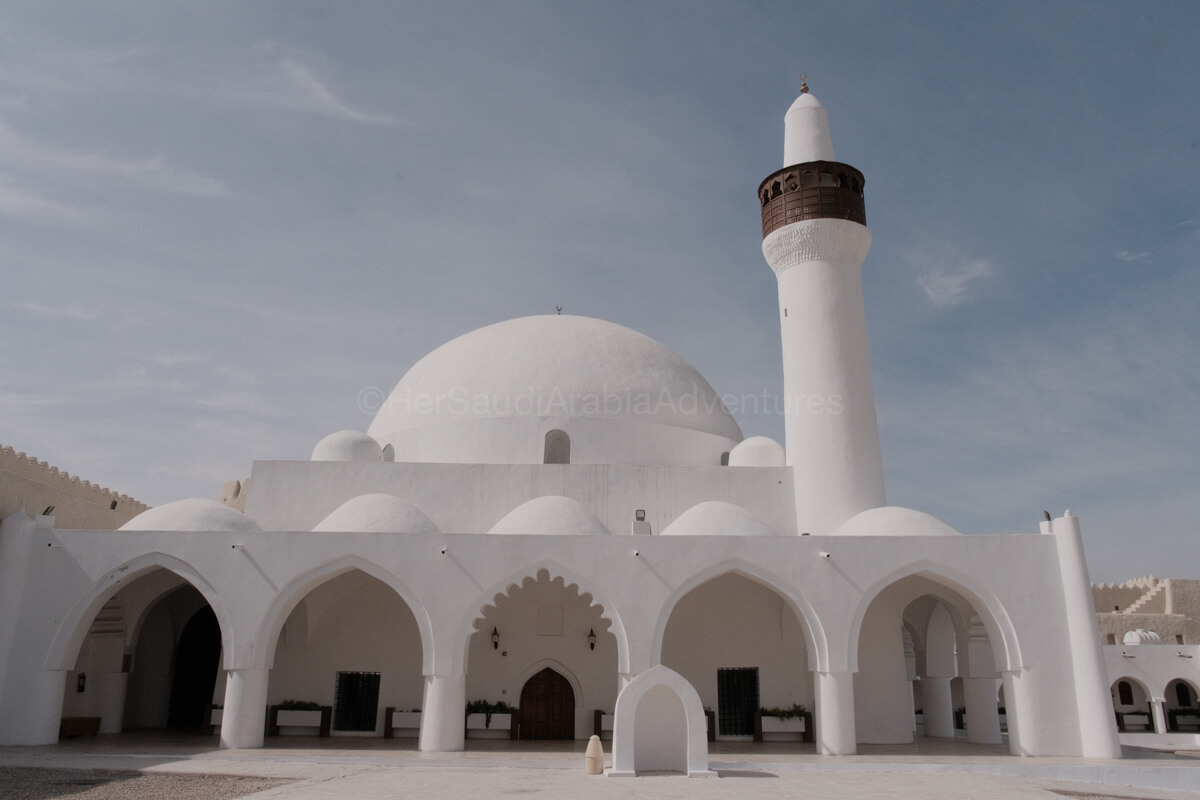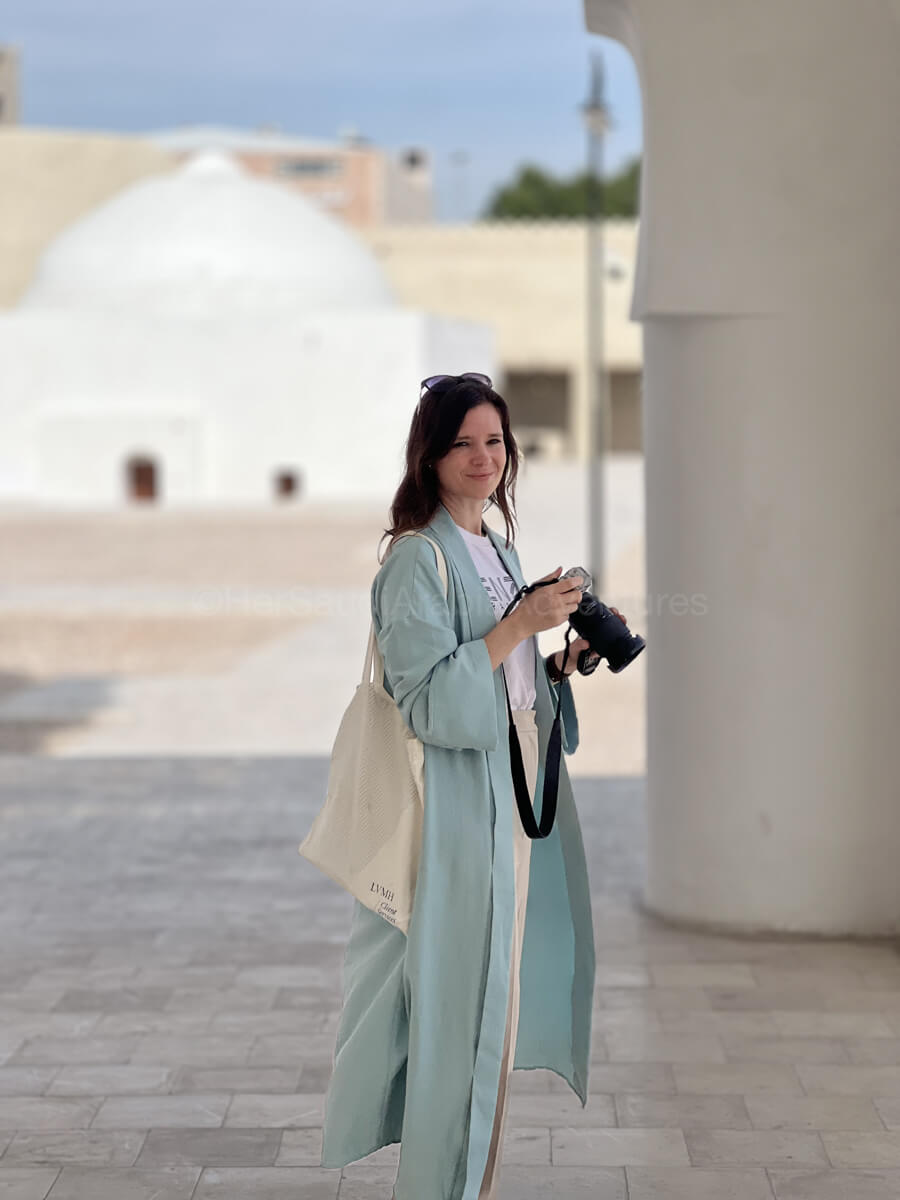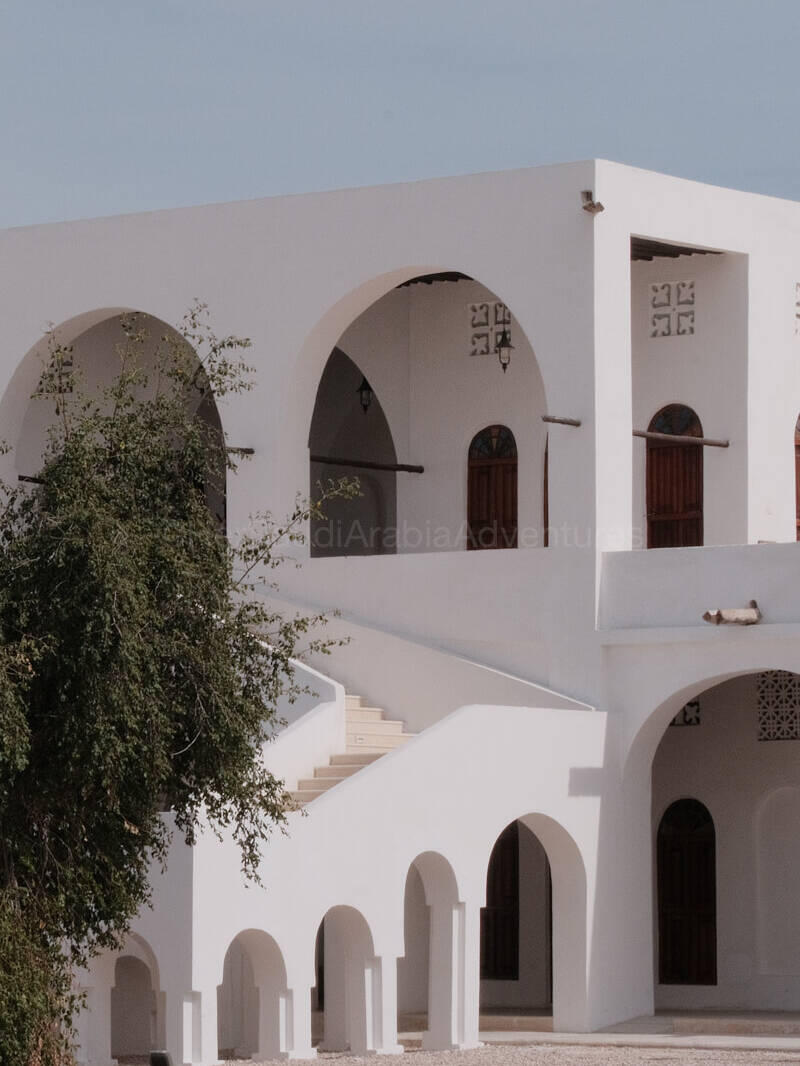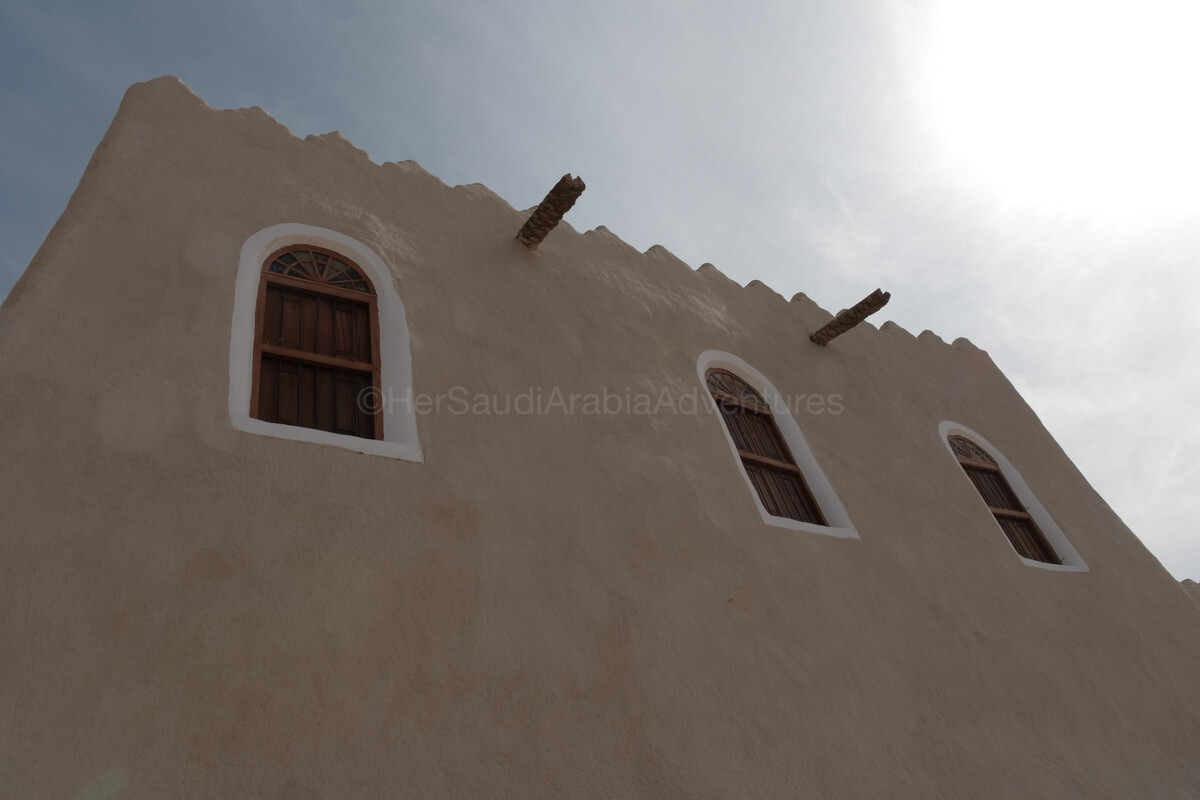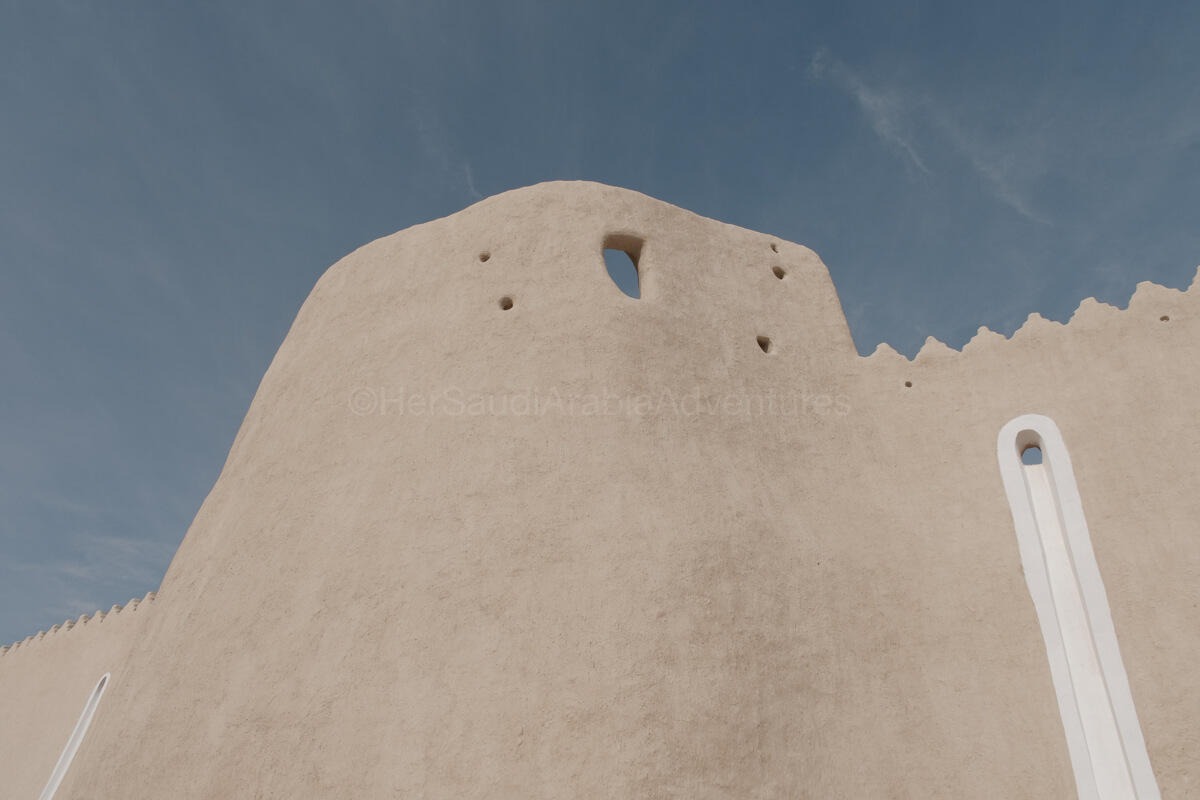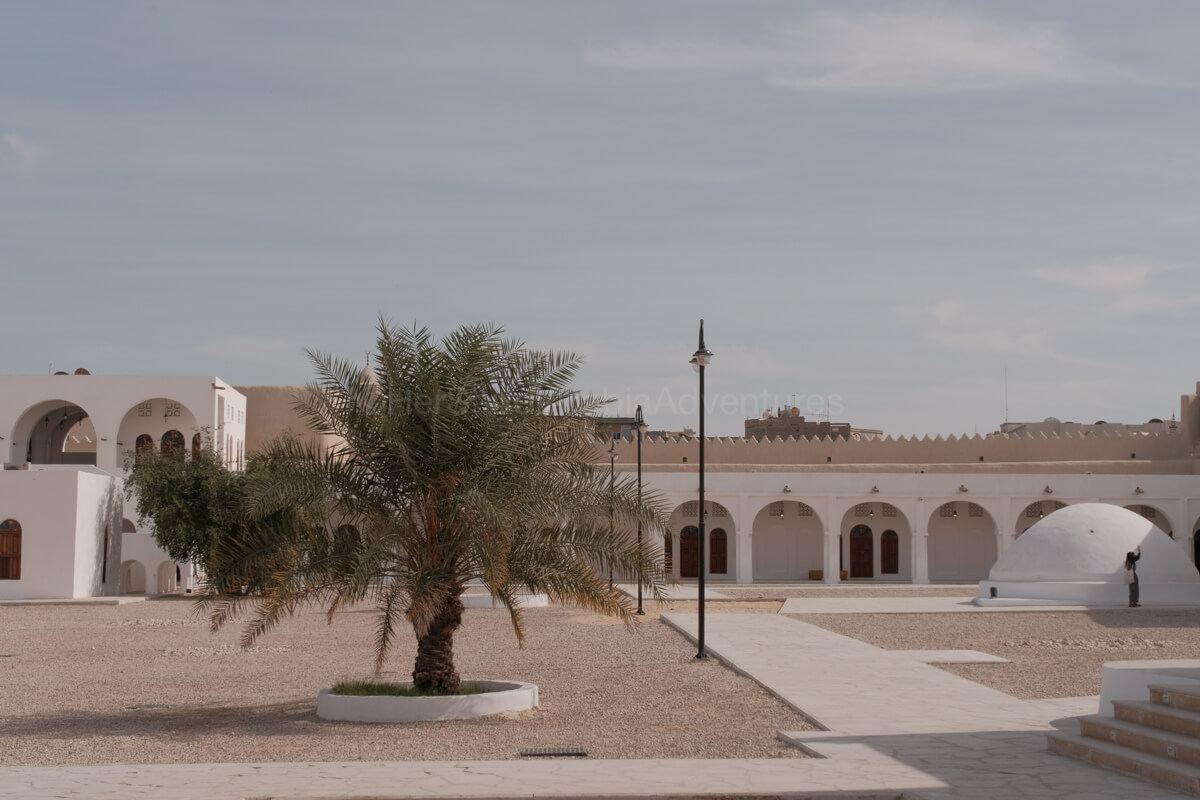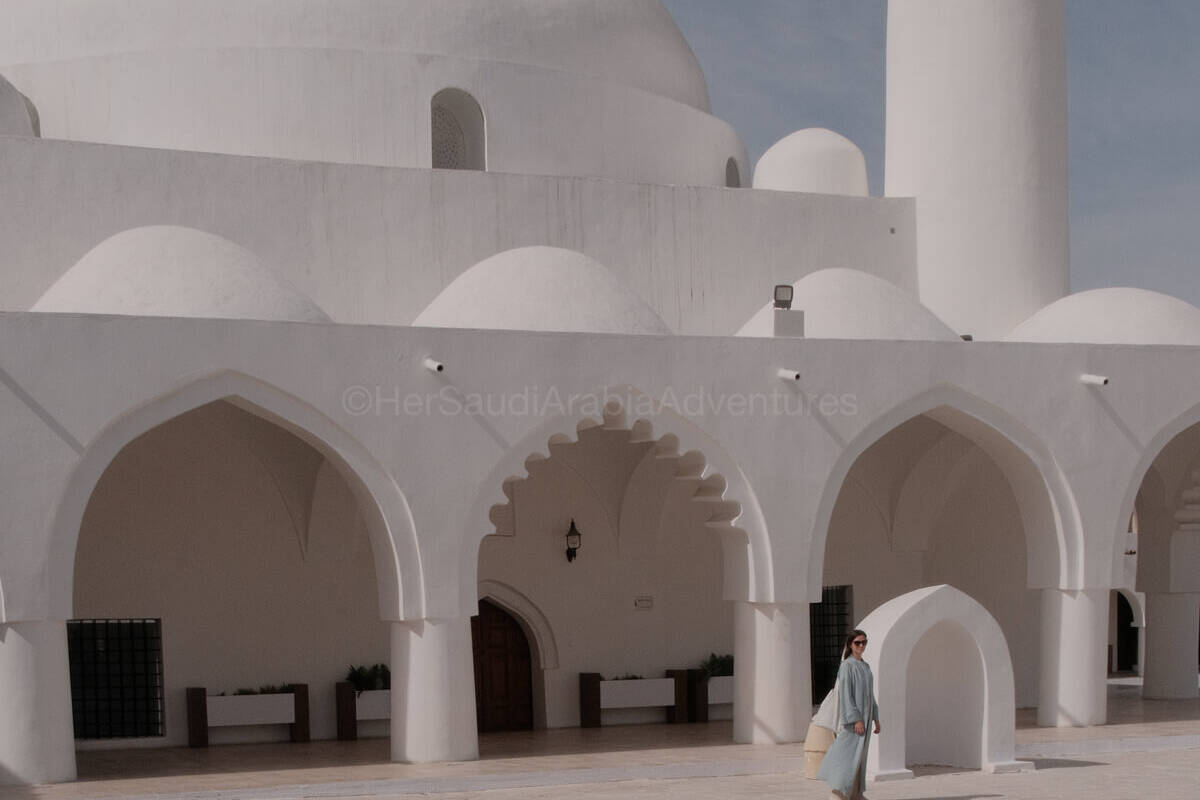Qasr Ibrahim, or Ibrahim Palace, is a historical landmark in Al-Hofuf, in the Al Ahsa region. The palace dates from the early 16th century and reflects a blend of Ottoman and Islamic architectural styles. I highly recommend a visit to Ibrahim Palace if you’re visiting Al Ahsa.
Visiting Ibrahim Palace
It was a perfect day to visit the palace, an afternoon in January after visiting the Al-Qarah Mountain. To our surprise, the site was empty. I was travelling with my colleague, a weekend in Al Ahsa to visit sites in the region, such as Judah’s thumb on the way from Riyadh.
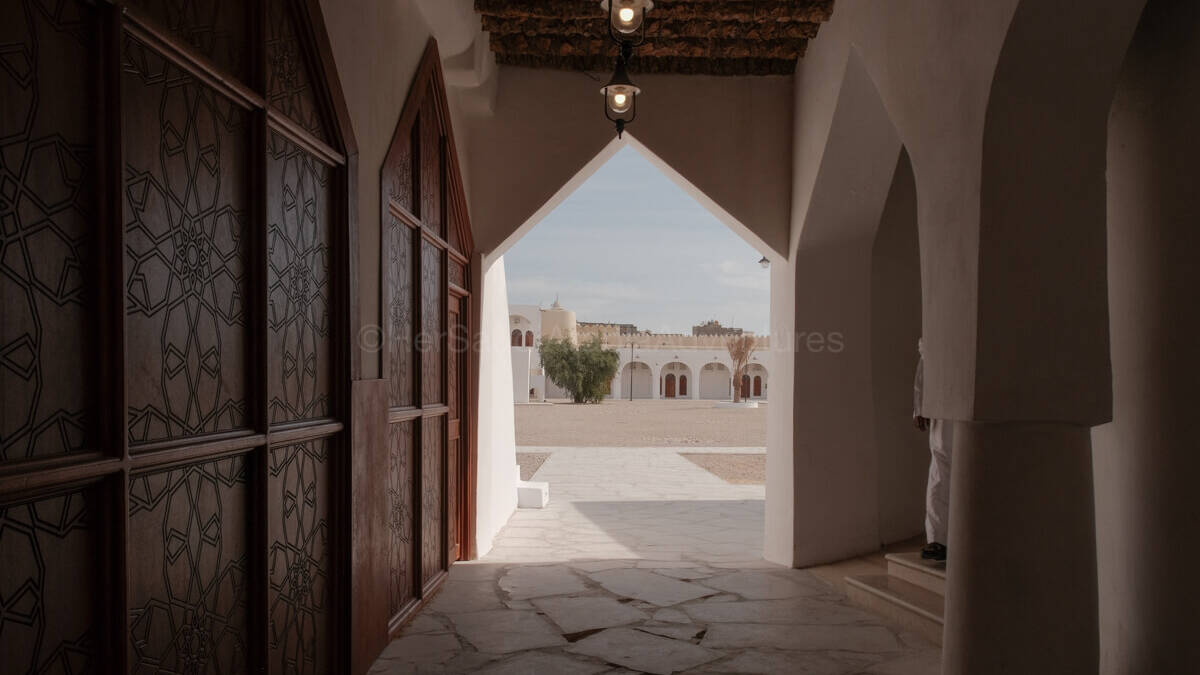
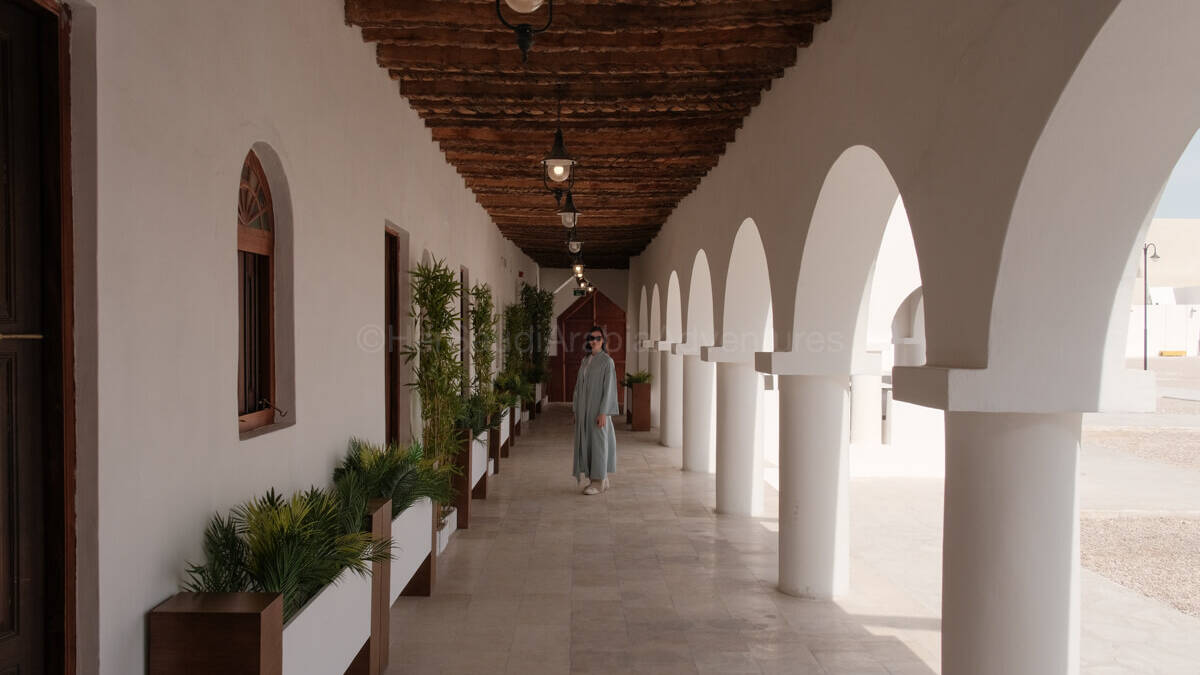
The Ibrahim Palace was used as a military base and administrative centre during Ottoman rule, playing an important role in controlling the surrounding areas. Its architecture resulted in a distinct structure, blending Islamic and military styles.
The structure has thick mudbrick walls, domes with the Al-Quba Mosque at its centre. The Mosque has a single dome on top of the entire building, which is unique in Saudi Arabia. It was built in 1556 by the Ottoman governor of the time.
During the visit of Ibrahim Palace, we can explore the courtyard, the mosque, and some rooms. The area is about 5600 square metres. I recommend 30 minutes (if you’re short of time) to an hour for the visit.
Blending Architectural Influences
The Tabuk region has a lot of history, with remnants from the Roman and Ottoman eras scattered across the region. While researching sites to include in a list of attractions near NEOM, I discovered a few hidden gems. At the time, English resources were not really available, but thanks to some Arabic sources shared by friends, I was able to find out more about these places. NEOM, with its ongoing construction and rapid transformation, has made access to some sites more challenging, but it’s still possible to find glimpses of history if you know where to look.
Among the sites I visited were ruins of the Hejaz Railway Stations, an incredible piece of Ottoman engineering that once connected Damascus to Mecca. Al-Bad’ (Madyan), with its ties to the Nabataean kingdom (Petra, Jordan), also caught my attention as an example of rock-cut architecture. Ain Musa (Moses’ Spring) a Roman-era irrigation systems with Ottoman restorations.
One site I found particularly interesting is Alaqan, located in the northern part of the NEOM region. While this village isn’t well known and it gives the chance to explore a location that remains relatively untouched excavation.
The village has a rich history as a key stop along ancient trade and pilgrimage routes. It was part of the Roman trade and military network that facilitated commerce across Arabia. It has traditional mud-brick houses designed to blend with the desert landscape while offering insulation against the region’s temperatures. Yes, you read right, due to its location, the Alaqan region becomes pretty cold in winter with temperature below zero.
A UNESCO site
In 2018, Saudi Arabia’s Al Ahsa oasis became the fifth location in the Kingdom to be registered as a UNESCO World Heritage Site, and Ibrahim Palace became one of 12 sites designated as world heritage within Al Ahsa. Today, Qasr Ibrahim is a key tourist attraction in Al-Ahsa, offering insight into the area’s rich heritage and its connections to the broader Islamic world.
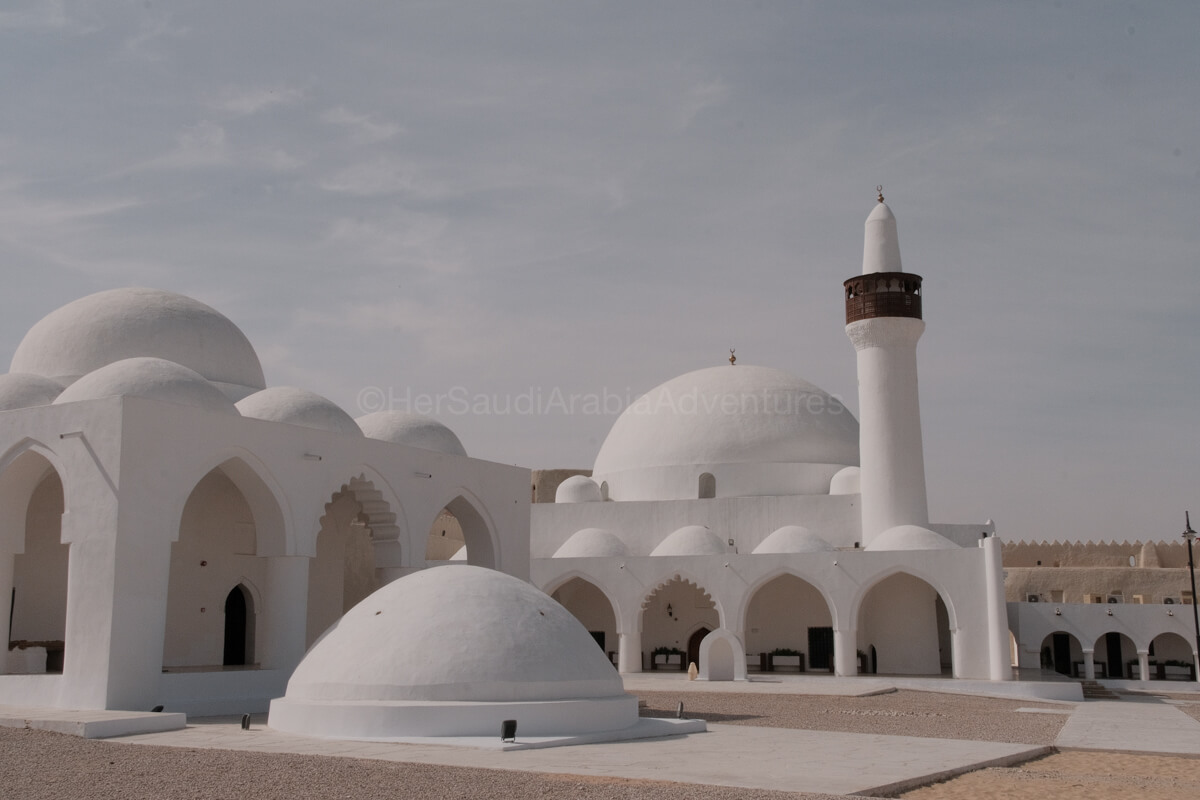
How to Get to Qasr Ibrahim
Qasr Ibrahim is located in the heart of Al-Hofuf, the largest city in the Al Ahsa region of Saudi Arabia. If you’re travelling from Riyadh, it’s about a 3-hour drive by car, or you can take the train to Hofuf Station, which is just a short taxi ride away from the palace. For those coming from Dammam, the drive takes about 90 minutes, making it an easy day trip.
